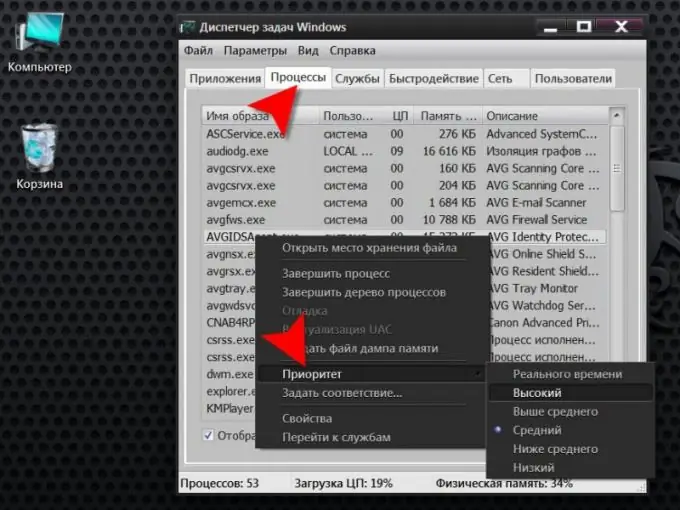No matter how powerful reserve of resources your computer has, they are still not infinite. A special OS component is responsible for the distribution of RAM and graphics memory, the order and frequency of access to the processor, cache memory and some other resources between all running system and application programs. He does this in accordance with the priority table, which he himself compiles by default. The user has the ability to intervene in the distribution of the severity of running processes.

Instructions
Step 1
Start Windows Task Manager. This can be done in several ways - for example, by pressing the keyboard shortcut Ctrl + alt="Image" + Delete. In Windows 7, an additional menu appears on the screen, in which you should select the "Start Task Manager" item, and in earlier versions of Windows this intermediate step is not. Another way to open Task Manager is to bring up the Launcher window by pressing the Win + R keyboard shortcut, then entering the taskmgr command and clicking OK.
Step 2
Go to the Processes tab of the Task Manager window. In the general list of currently running processes, find the one whose priority you want to change. To make it easier to find the desired name, the caption in the Image Name column can be sorted alphabetically - click the column heading to sort the process names in ascending order. Clicking again will sort the list in reverse order.
Step 3
If you do not know the name of the process, but the program to which it belongs is listed on the Applications tab of the task manager, then find it there and right-click. In the pop-up menu, select the "Go to process" line and the manager will switch to the "Processes" tab by itself, find and select the required process in the list.
Step 4
Right-click on the line with the required process and open the "Priority" section in the context menu. By default, all processes have a "normal" priority - change this by selecting any of the six listed options. At the same time, do not forget that in some cases, an excessive increase in the priority of application programs (items "High" and "Real time") can lead to a slowed down response of the operating system to keystrokes, mouse movement, etc. The same nuisance can occur if the priority of system processes is too lowered (for example, a process named explorer).






